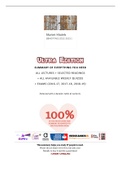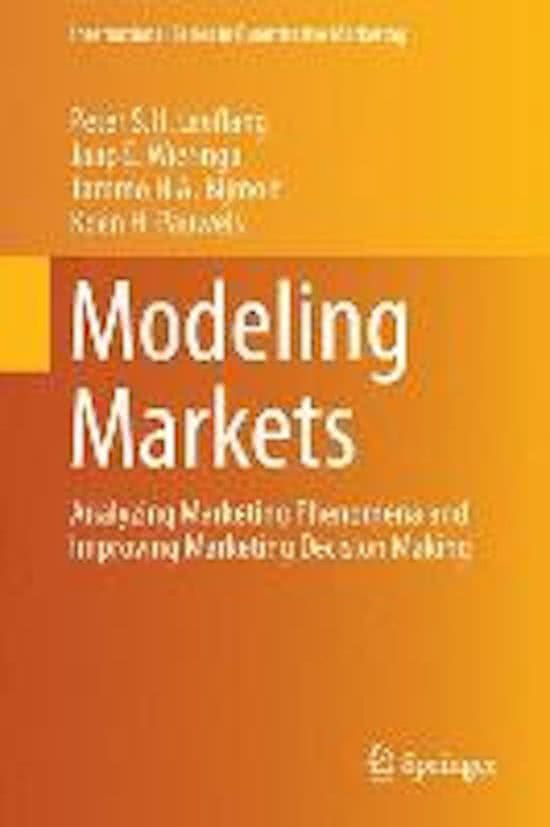SUMMARY OF EVERYTHING YO U NEED
ALL LECTURES + SELECTED READINGS
+ ALL AVAILABLE WEEKLY QUIZZES
+ EXAMS (2016-17, 2017-18, 2018-19)
E n h a n c e d w i t h a d y n a m ic t a b le o f c o n t e n t s .
, MADS MADLAD |2
Note from MADS MADLAD:
Thank you for buying my summary. I sincerely hope it helps you excel and learn
from this course. When I was writing these I sometimes struggled with this
program, but there were no summaries available.
This is why I decided to write something that is truly complete with a lot of
effort put into it. It helped me and my friends get good grades, but I also
always had you in mind, the future reader. When necessary, I always went the
extra mile to make this summary, more readable, organized and complete.
If you feel like it, leave me a review of how the course is going using this
summary, it will make my day to hear your opinion good or bad!
Check out my other extensive summaries for other MADS courses:
Available on:
Contact info:
If you need help or have an inquiry, contact me: https://www.georgedreemer.com
Connect with me on LinkedIn: https://www.linkedin.com/in/georgedreemer/
Donations:
By no means am I looking for fellow students to send me money! But if you feel like sending
me some ETH or BTC, you can do so here:
--> ETH: 0x123e086c6808459e7fC6Ac7F64a77dBA1dDe0149
--> BTC: bc1qgwzc82vph5v8rmzef4ywechjf85772n7m2e22g
, MADS MADLAD |3
wishes you good luck & perseverance.
Grades Testimony:
, MADS MADLAD |4
Table of Contents
Week 1............................................................................................................. 10
Lecture 1: Introduction to Marketing Models ............................................... 10
Model building........................................................................................... 10
3 Type of Models: Iconic, analog and symbolic .......................................... 10
Reasons to use Models .............................................................................. 11
Reading 1: Market Models Chapter 1 ........................................................... 12
1.2 Verhouten Case ................................................................................... 12
1.3 Typologies of Marketing Models .......................................................... 12
1.3.2 Decision Models vs. Models That Advance Marketing Knowledge
............................................................................................................. 12
1.3.3 Degree of Explicitness: Implicit vs. Verbal vs. Formalized vs.
Numerically-Specified Models .............................................................. 13
1.3.4 Intended Use: Descriptive, Predictive and Normative Models..... 15
1.3.5 Level of Demand ............................................................................... 16
1.4 Benefits from Using Marketing Decision Models ................................. 16
1.4.1 Direct Benefits ............................................................................. 16
1.4.2 Indirect Benefits .......................................................................... 17
1.5 The Model Building Process ................................................................. 17
Quiz 1: Questions + Answers......................................................................... 20
Week 2............................................................................................................. 23
Lecture 2: Model Specification (1) – Model types, elements and critera ...... 23
Model Types .............................................................................................. 23
Intended use: Descriptive, Predictive and Normative .......................... 23
Level of demand: Product class/form/industry sales, Brand sales, Market
share .................................................................................................... 23
Amount of behavioral detail: No detail, Some detail, Substantial detail
............................................................................................................. 24
Model elements......................................................................................... 24
Single equation model.......................................................................... 24





